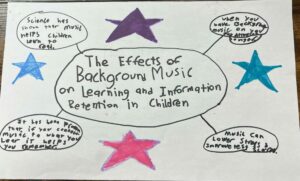In the bustling corridors of elementary and middle schools, amidst the whirlwind of subjects like mathematics, science, and language arts, lies a trove of education often overlooked: related arts. Physical education, music, and visual arts — these domains aren’t just about fun and creativity; they’re fertile ground for cultivating crucial skills, including reading comprehension. Yes, you heard it right: reading comprehension in related arts classrooms.
One common misconception that pervades educational circles is the narrow definition of “text.” Traditionally, when we think of text, we conjure images of words printed on paper, neatly arranged in paragraphs. However, the reality is far broader. Text is anything from which we can extract information. Consider sheet music, for instance. Those intricate symbols and notations tell a story, convey emotions, and guide musicians through melodies and harmonies. They are, undeniably, a form of text. Similarly, videos and photographs are visual texts that communicate narratives, emotions, and ideas.
So, why should related arts teachers concern themselves with reading comprehension? Aren’t they supposed to focus solely on their respective disciplines? This line of thinking is a fallacy. Related arts teachers have a vested interest in prioritizing literacy, as proficiency in literacy (i.e., Reading Comprehension) is fundamental to students’ acquisition of content knowledge within their respective disciplines. In fact, they play a pivotal role in shaping well-rounded individuals equipped for success in all facets of life.
Imagine a student in a visual arts class analyzing a painting by Van Gogh. To truly appreciate the artwork’s depth and meaning, the student must decipher the symbolism, interpret the brushstrokes, and infer the artist’s emotions. This process mirrors the essence of reading comprehension: extracting meaning from a text. By guiding students through this analysis, the visual arts teacher not only enhances students’ understanding of art but also fortifies their comprehension skills and builds their knowledge of the world, preparing them to tackle complex texts across all subjects.
Similarly, in music class, students delve into the language of notes and rhythms, deciphering compositions like detectives unraveling a mystery. They discern patterns, decode symbols, and make connections between musical elements. This cognitive exercise is akin to reading comprehension, wherein students decode written language to derive meaning. By nurturing these skills, music teachers empower students to engage critically with musical texts and, by extension, with written texts in other subjects.
Let’s not forget about physical education, where movement becomes the language through which students express themselves. Even here, reading comprehension plays a vital role. Consider a dance routine or a sports strategy. Students must comprehend instructions, interpret movements, and anticipate outcomes, all of which require robust comprehension skills. The physical education teacher, therefore, becomes a facilitator of not just physical expertise but also cognitive agility.
To support reading comprehension in related arts classrooms, educators can employ various strategies:
- Explicit Instruction: Teachers can explicitly teach comprehension strategies such as predicting, visualizing, questioning, and summarizing. These strategies can be applied to diverse texts, including sheet music, dance choreography, and visual artworks.
- Modeling Thinking Processes: Teachers can model their own thinking processes while engaging with different types of texts. By verbalizing how they make inferences, draw connections, and synthesize information, teachers demystify the comprehension process for students.
- Graphic Organizers: Graphic organizers provide visual frameworks for organizing information and fostering comprehension. Teachers can use concept maps, story maps, and Venn diagrams to help students visualize relationships between elements within texts.
- Scaffolded Discussions: Engaging students in structured discussions about various texts encourages active participation and deeper comprehension. Teachers can pose open-ended questions, encourage peer interactions, and provide feedback to scaffold students’ comprehension skills.

In a recent classroom observation, a visual arts teacher utilized the Placemat strategy to spark student engagement in dissecting the foreground and background of paintings dating back to the late 1800s and early 1900s. Guided by questions/prompts such as “Imagine hiking from the foreground to the background. What are 5-10 items you need on your journey?” and “What evidence of the human world do you see in your painting?” students actively analyzed the artworks, fostering critical thinking and deeper comprehension.
Meanwhile, a middle school music educator aimed to instill in her students the significance of music and its educational value. She encouraged them to delve into research topics such as “The Effects of Music for People with Anxiety,” “The Effects of Background Music on Learning and Information Retention in Children,” and “Music Therapy for Stroke Rehabilitation.” Students organized and presented their findings using concept maps and informational posters.



To further engage with the material, students participated in a Gallery Walk, employing Text Codes and Margin Notes to interact actively with each poster, promoting a deeper understanding of the research their peers had done.
In another classroom across the district, during a Physical Education class, students observed videos showcasing several MLB players in action at bat. By closely observing the players’ arm, wrist, hand, and foot positioning, students begin creating their own comprehensive guide for mastering the art of hitting a baseball. This activity not only honed their physical skills but also encouraged analytical thinking and informed decision-making.
By embracing reading comprehension in related arts classrooms, teachers equip students with invaluable skills that extend beyond the confines of the four core subject areas. Whether analyzing a musical score, interpreting a dance routine, or deciphering a painting, students learn to navigate and derive meaning from diverse texts. These skills not only enhance academic success but also foster critical thinking, creativity, and empathy — qualities essential for thriving in an ever-evolving world. So, let’s debunk the myth that related arts teachers are “not reading teachers” and instead celebrate their pivotal role in nurturing comprehensive literacy skills. After all, in the tapestry of education, every discipline contributes to the fabric of knowledge and understanding.
